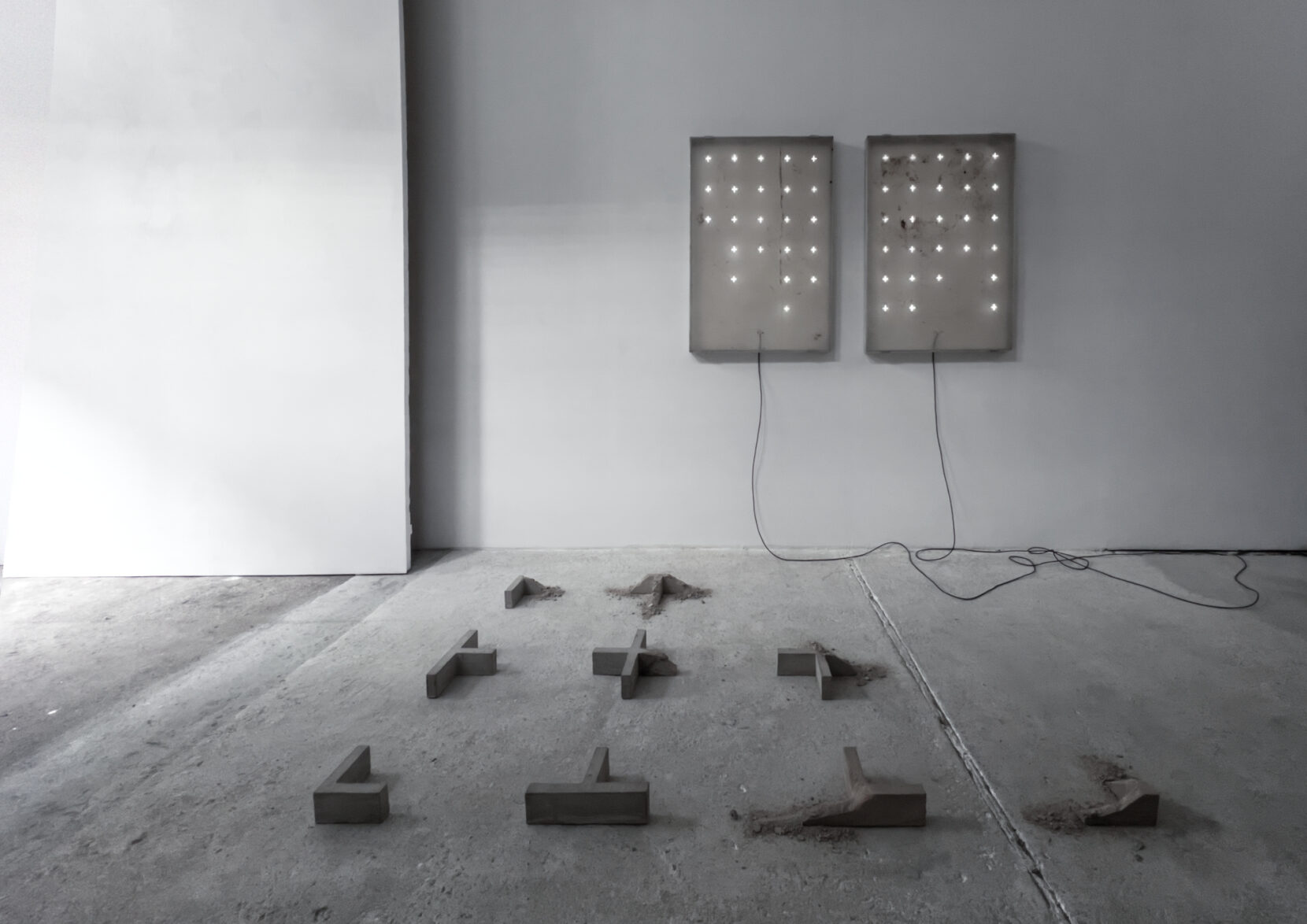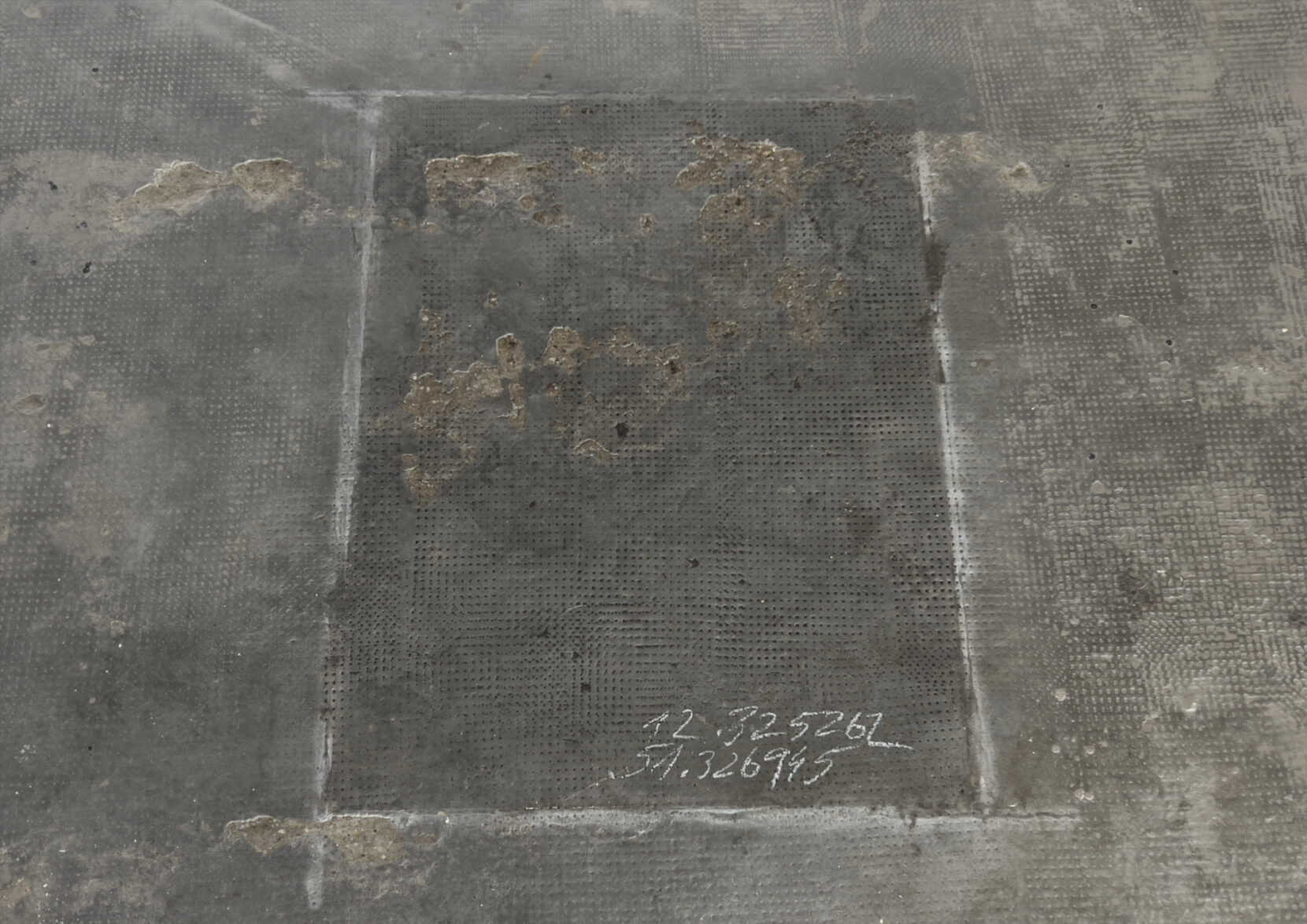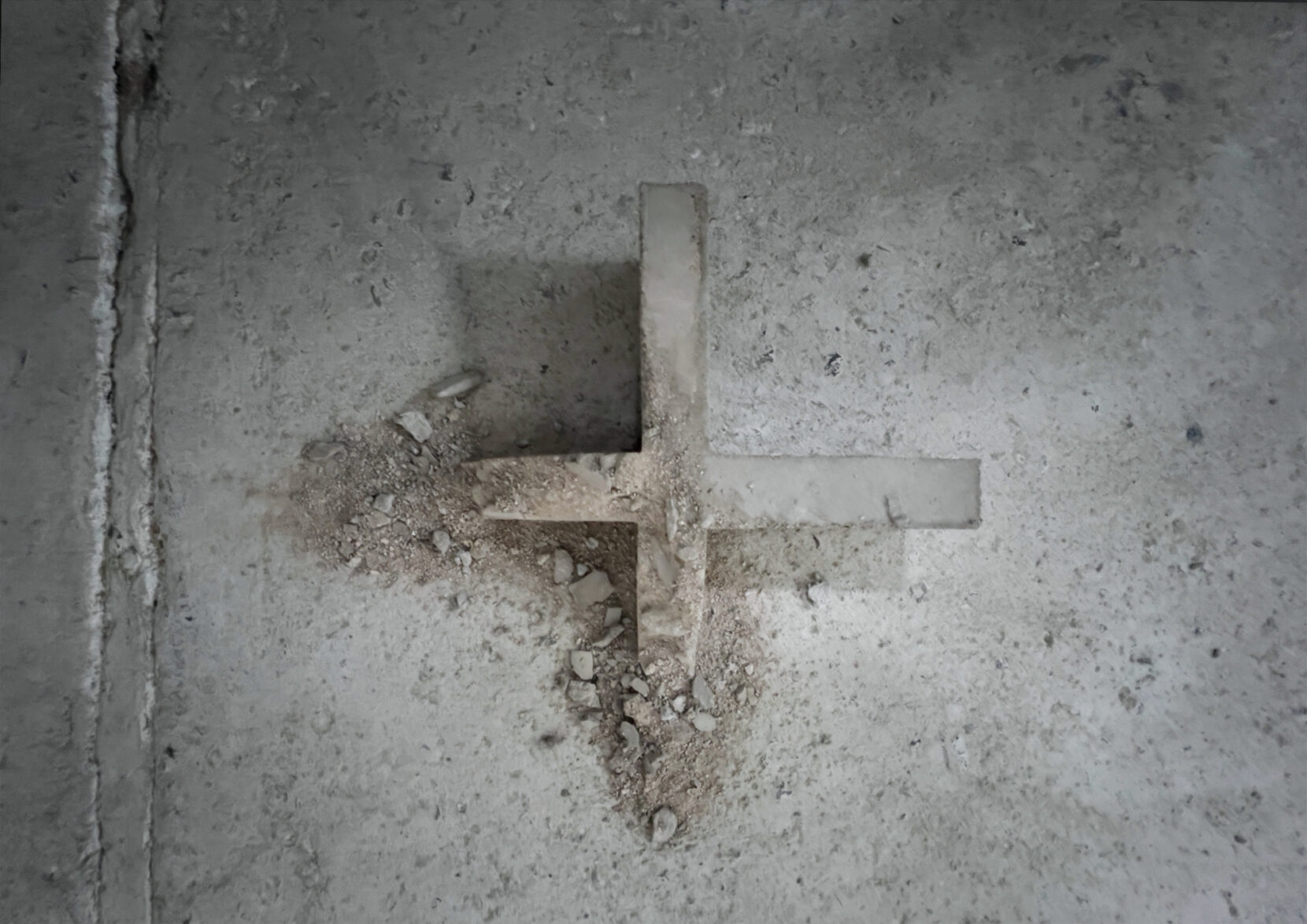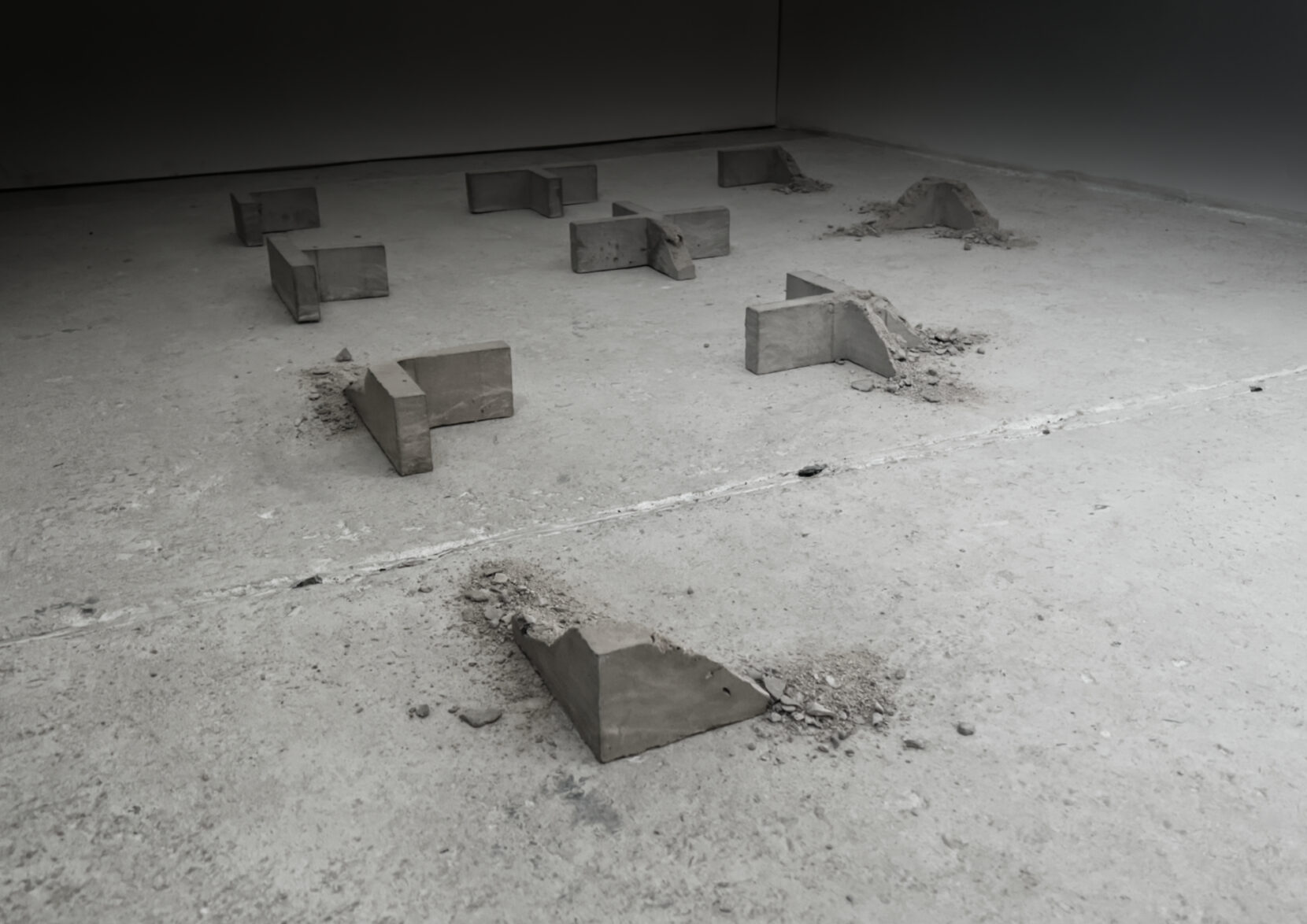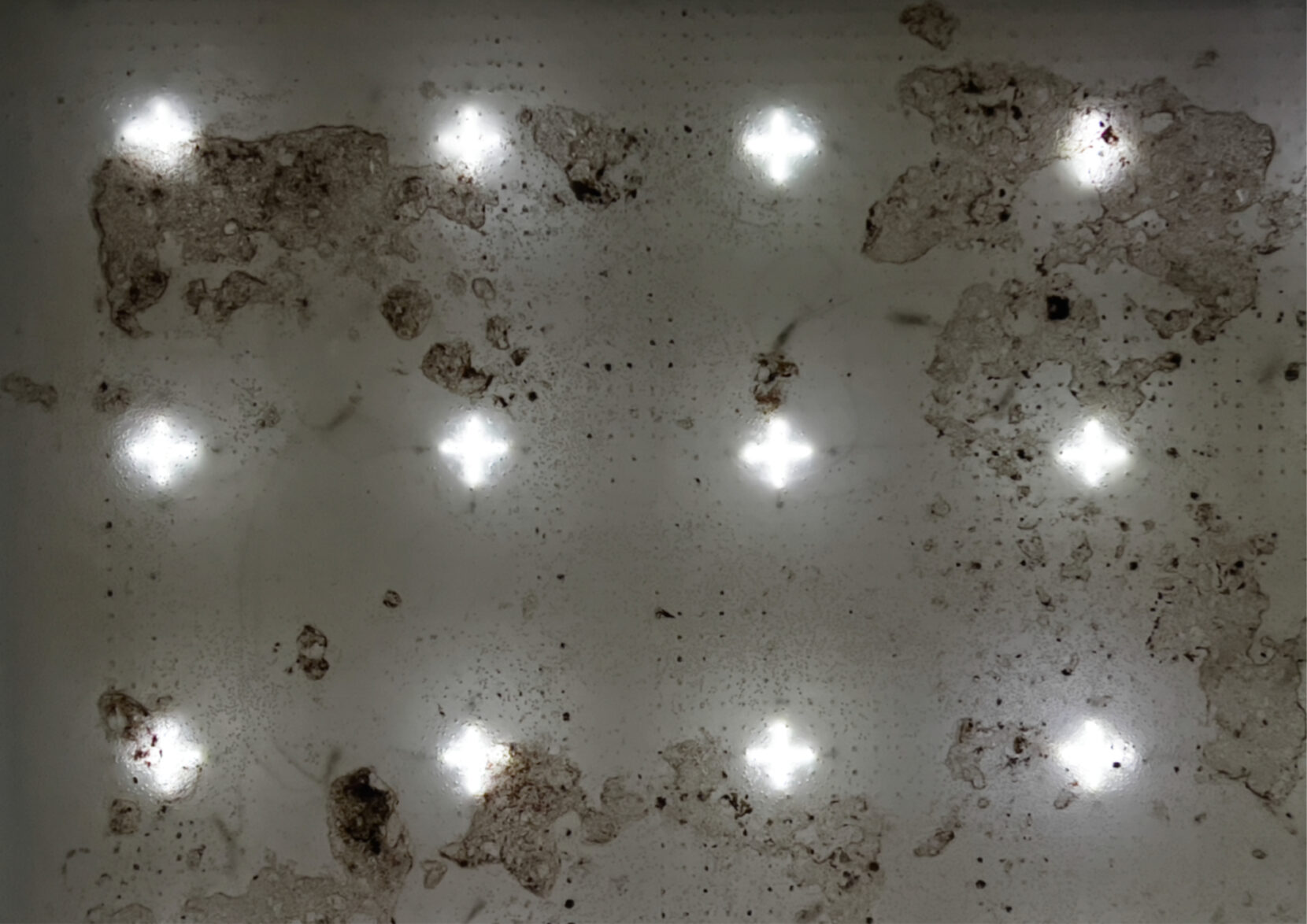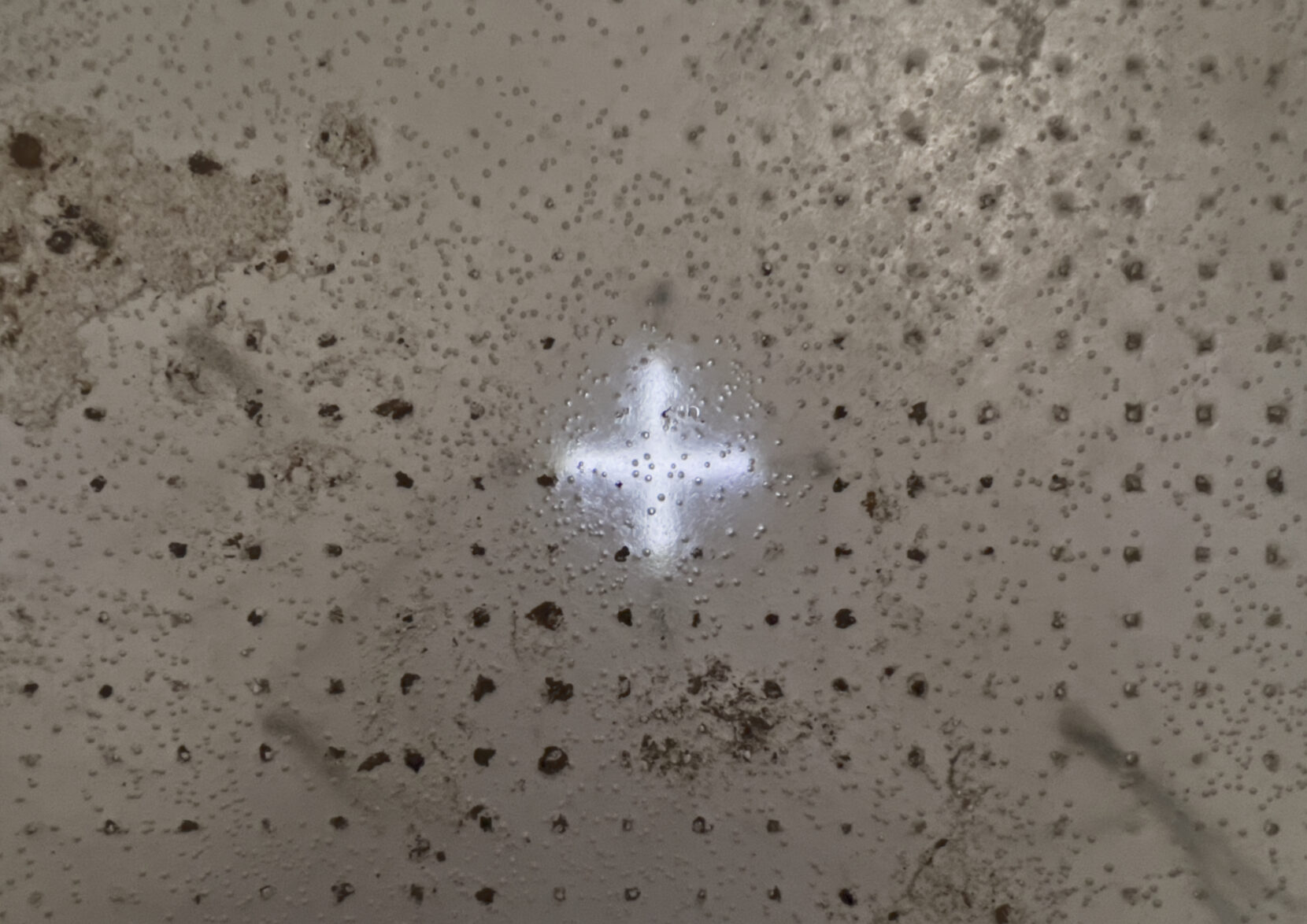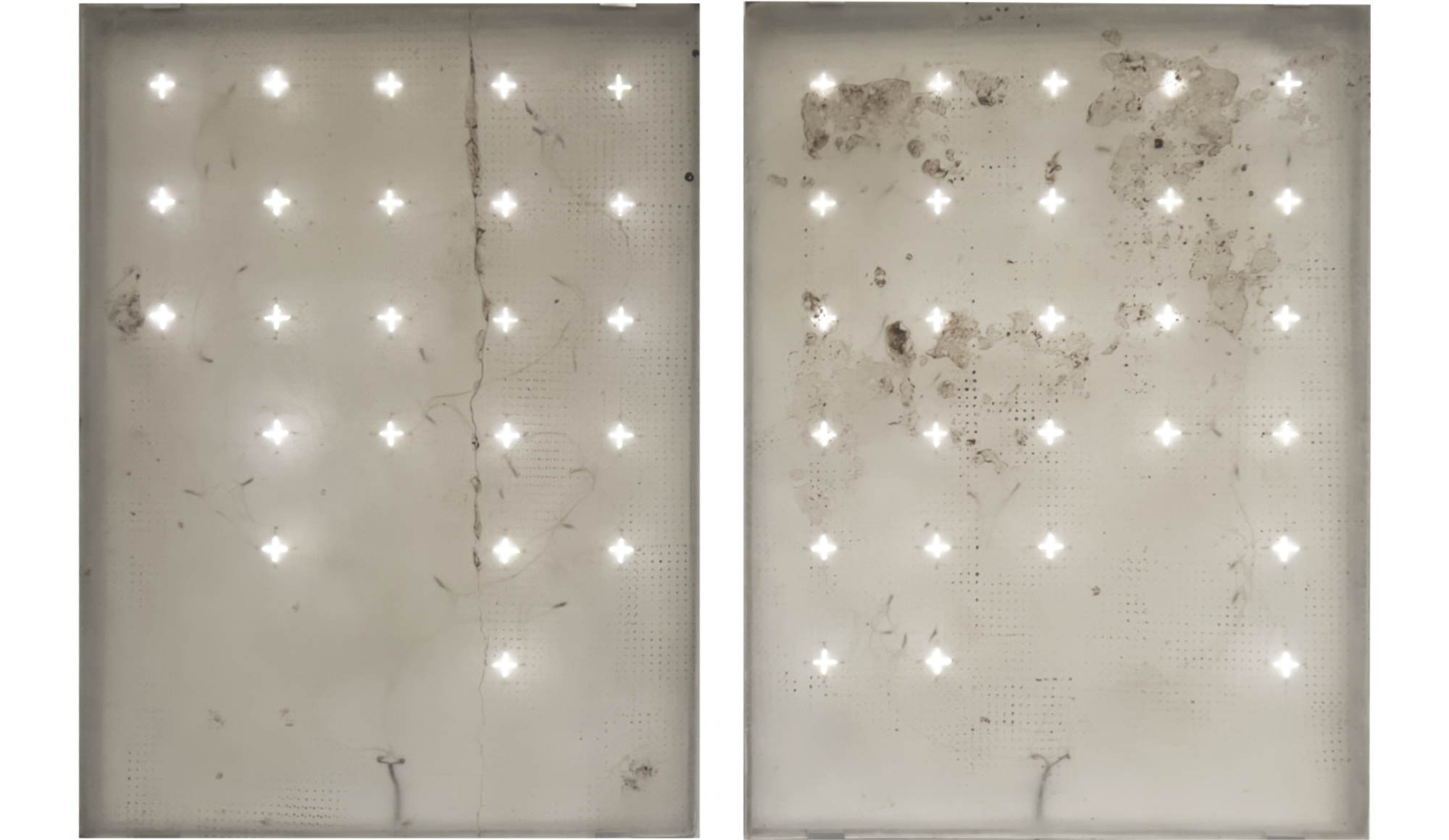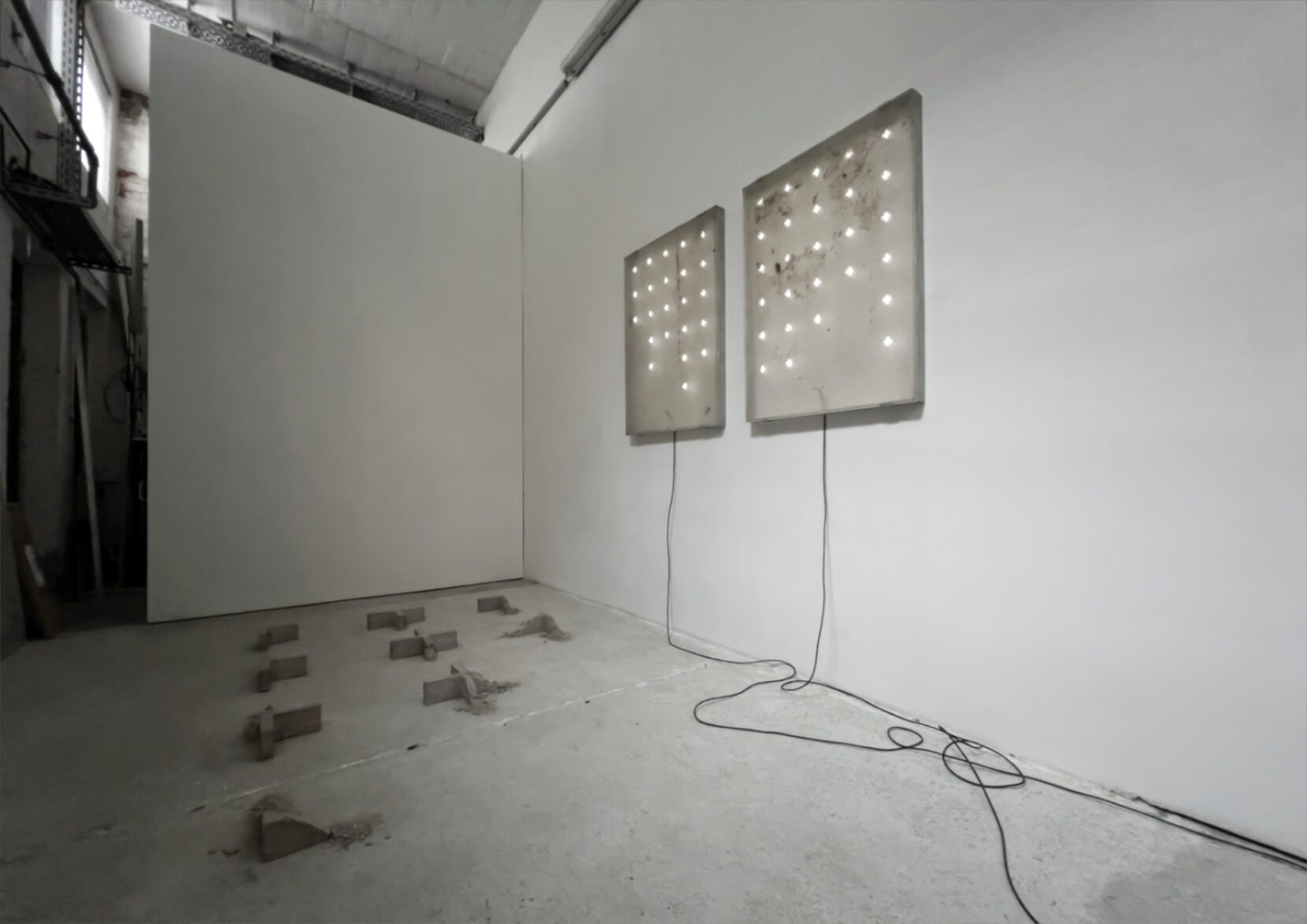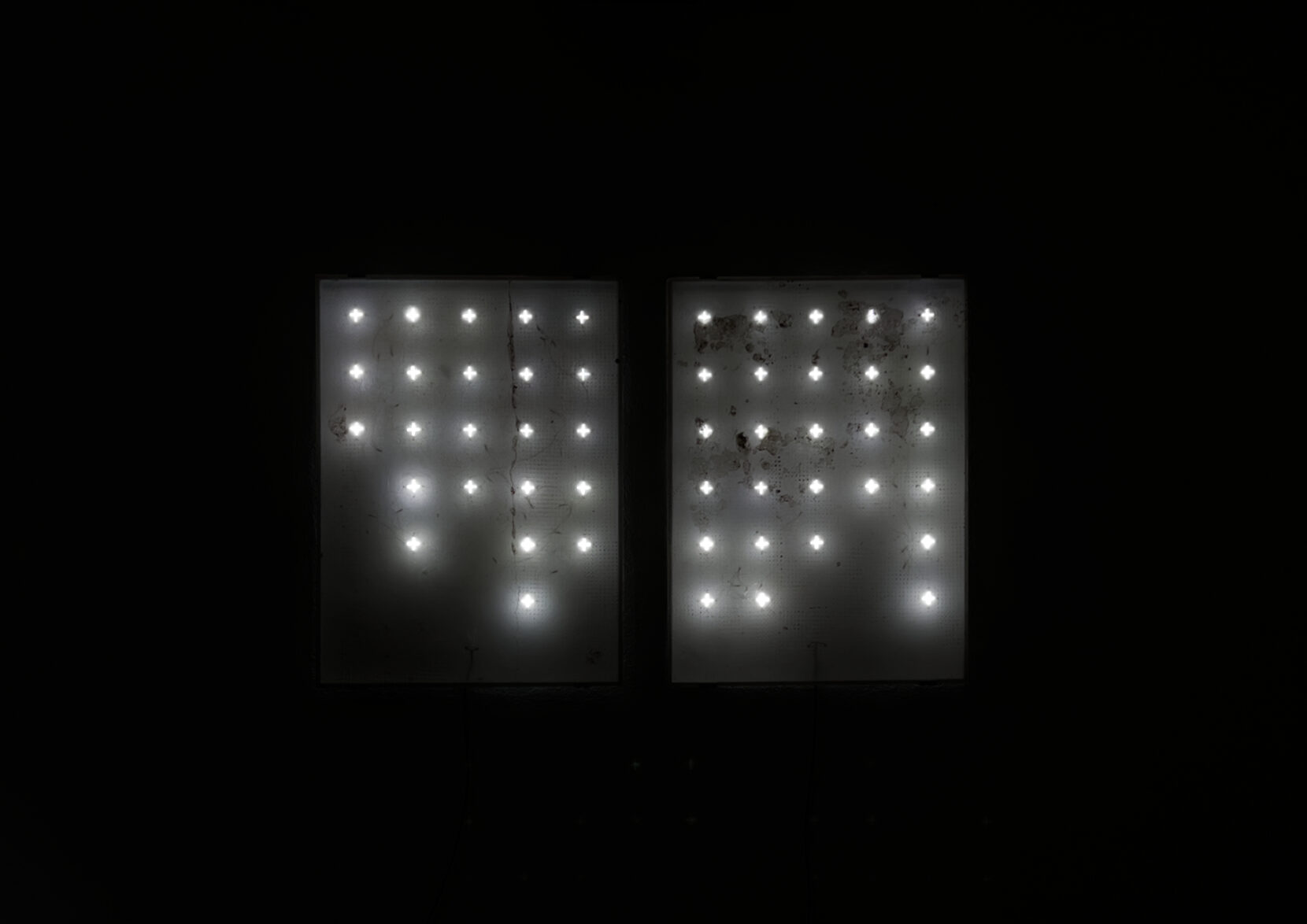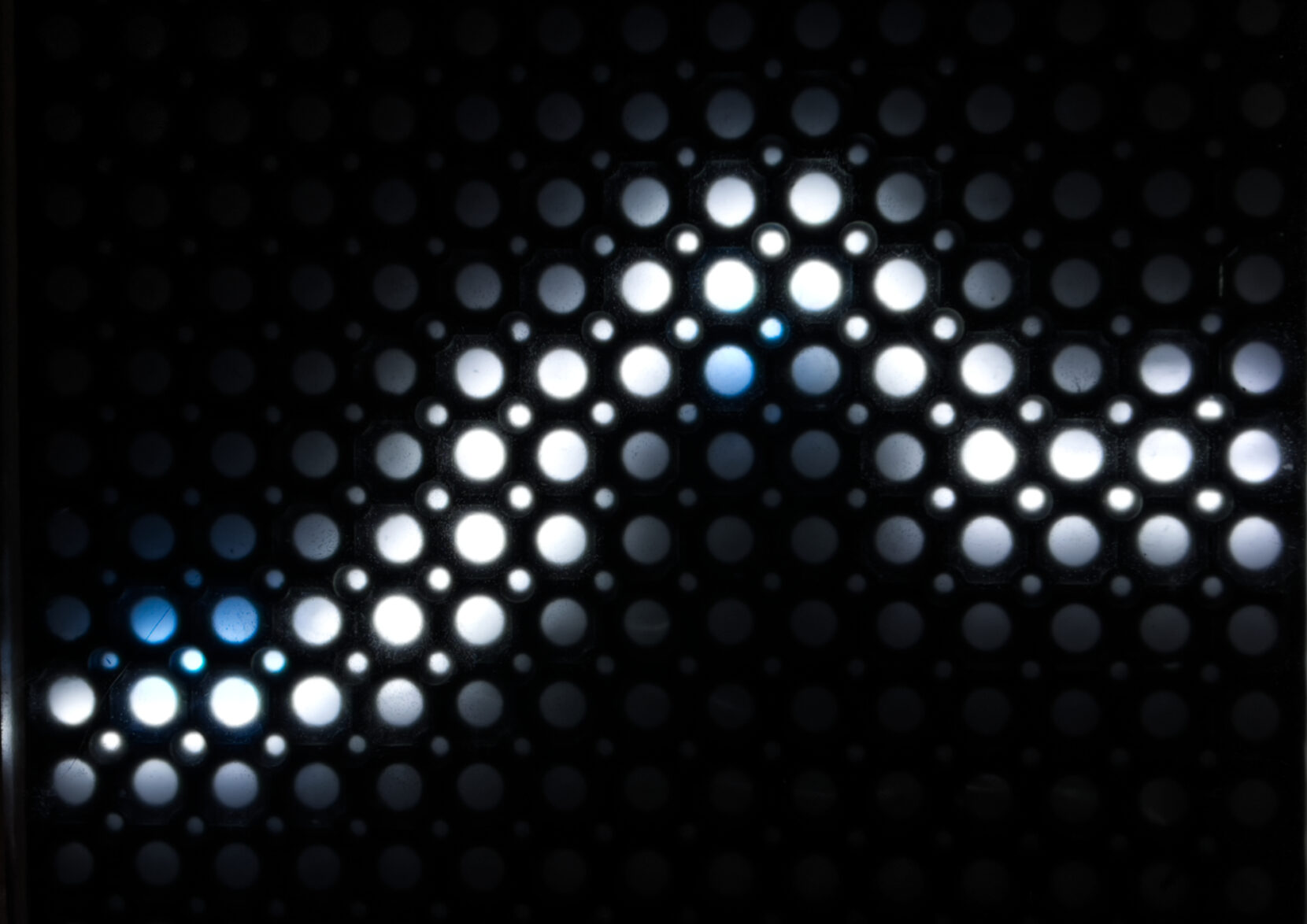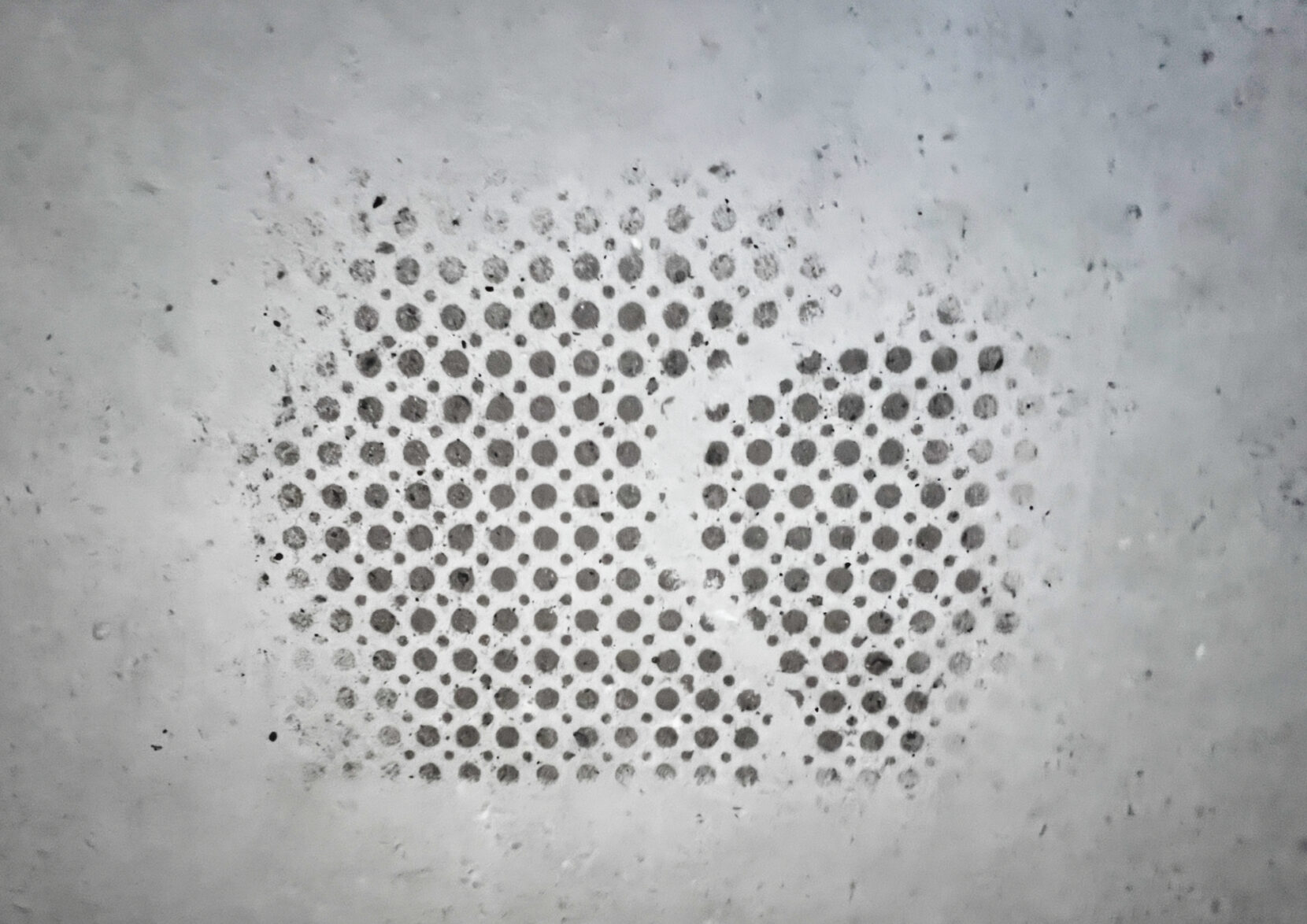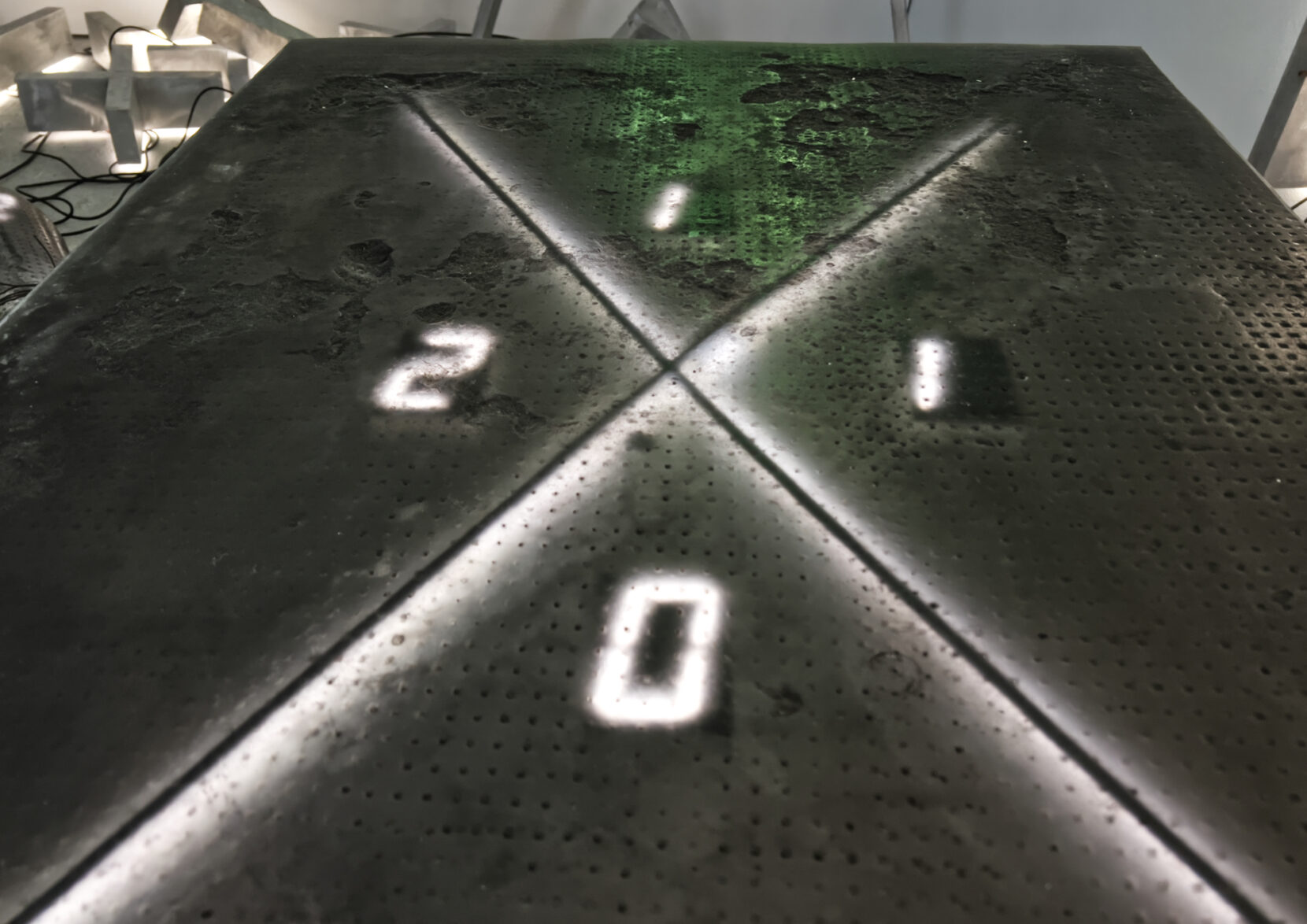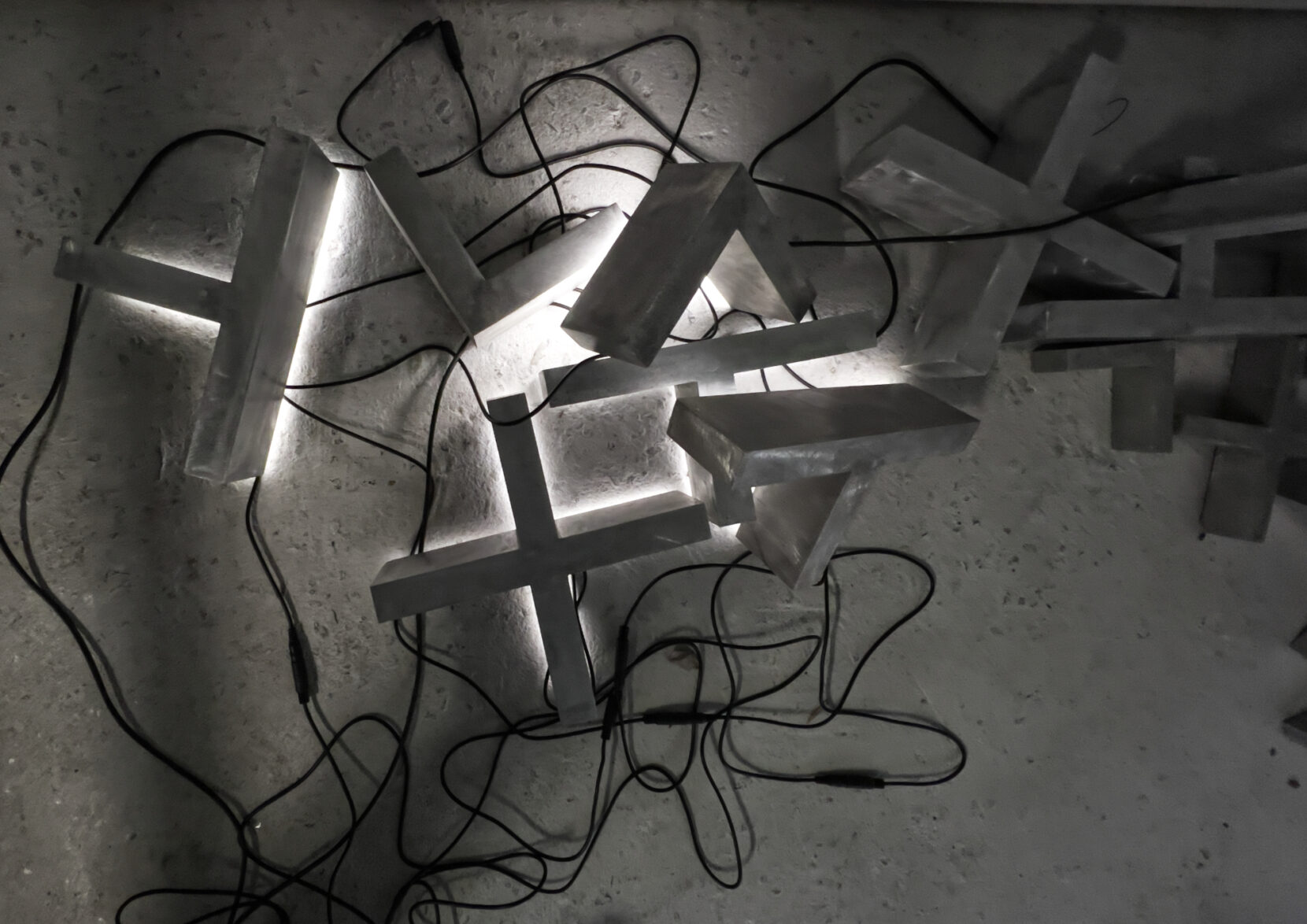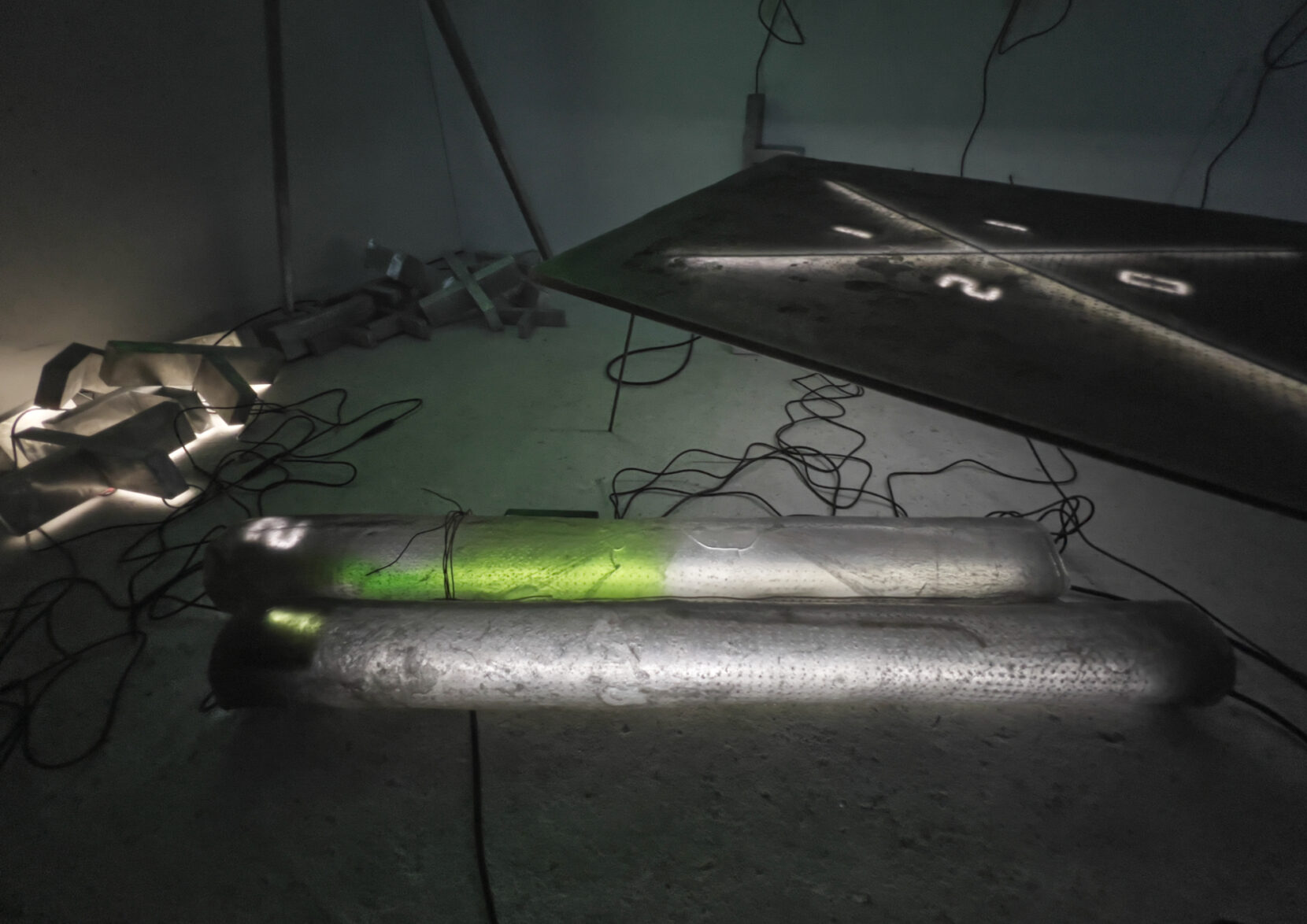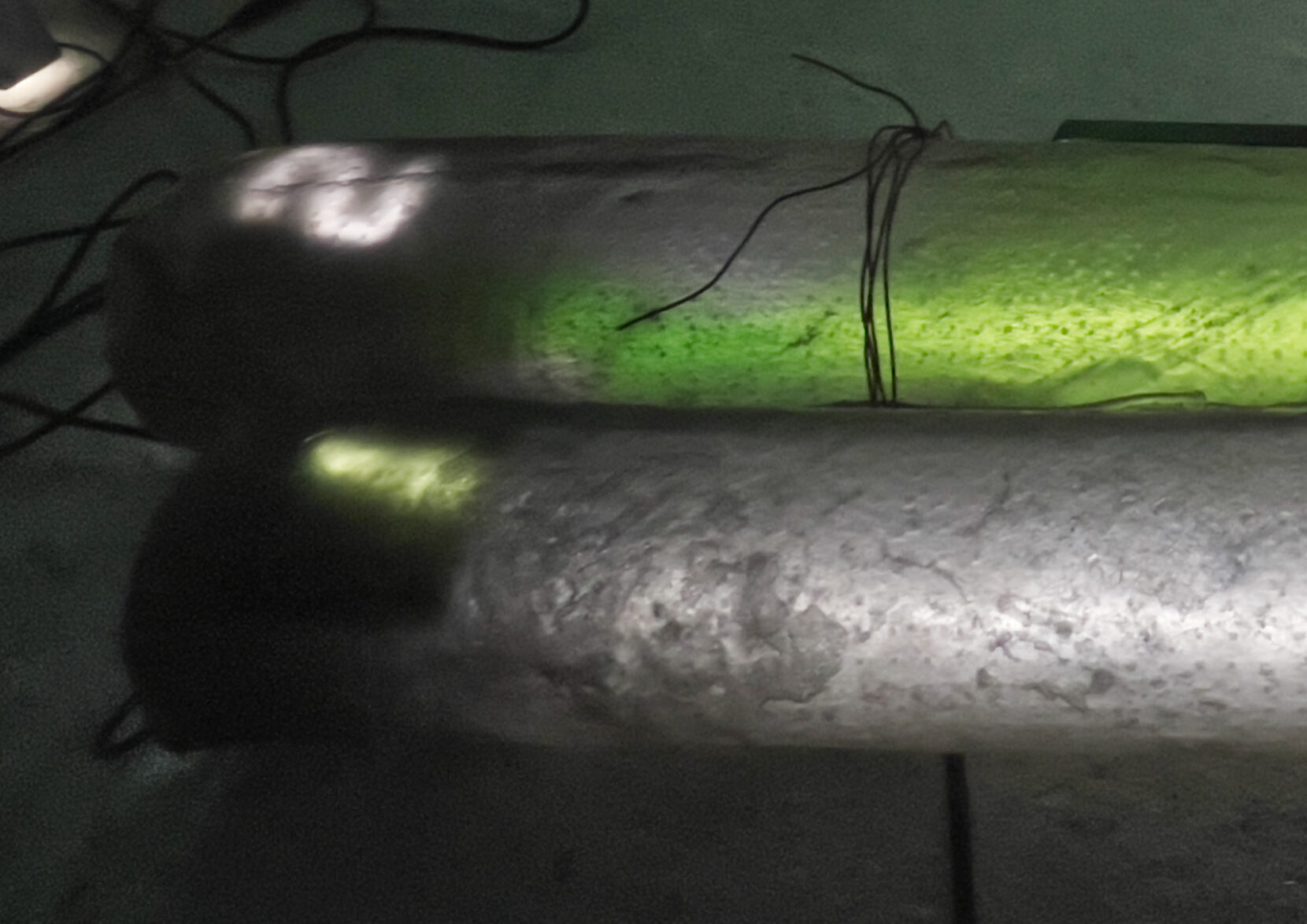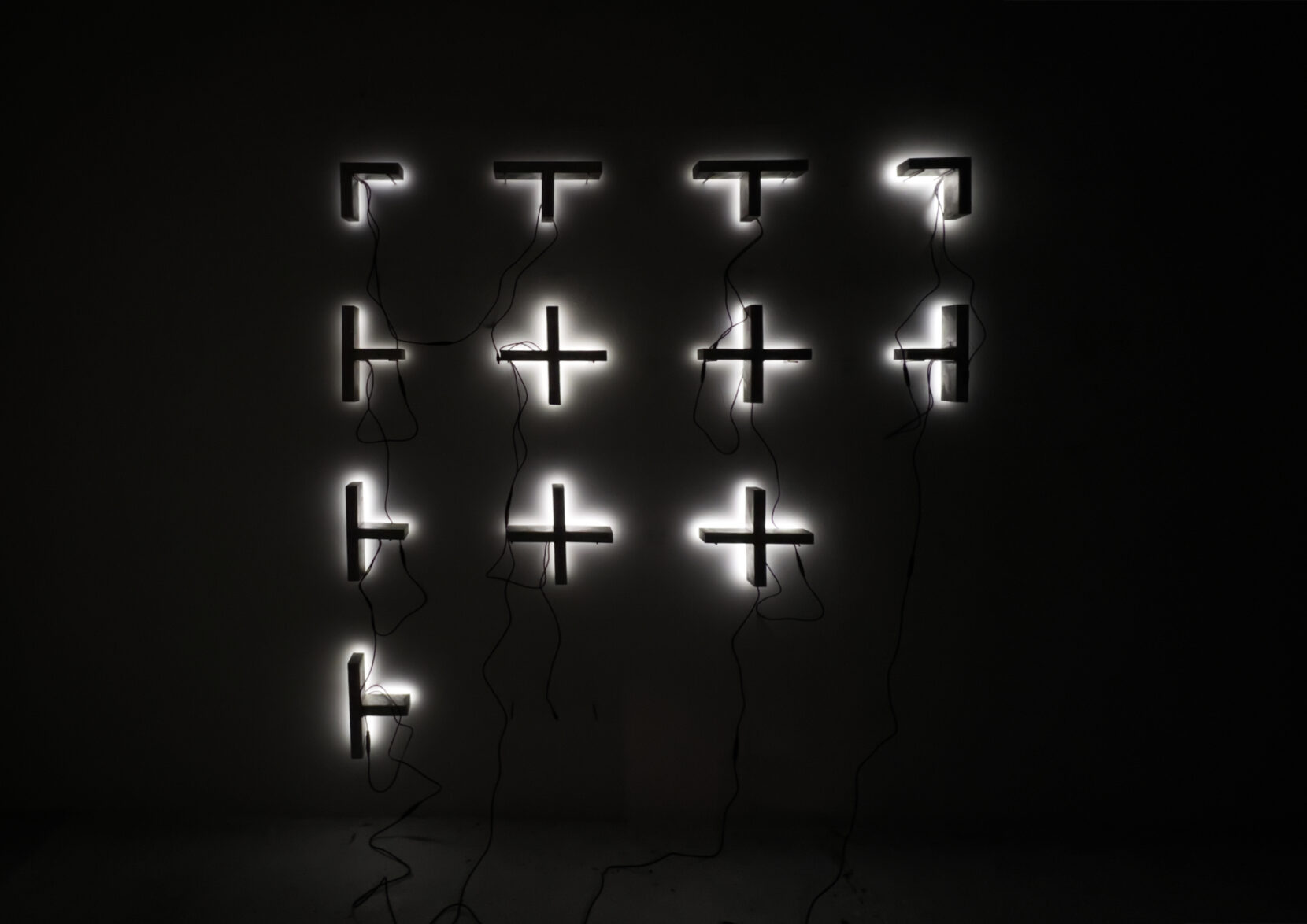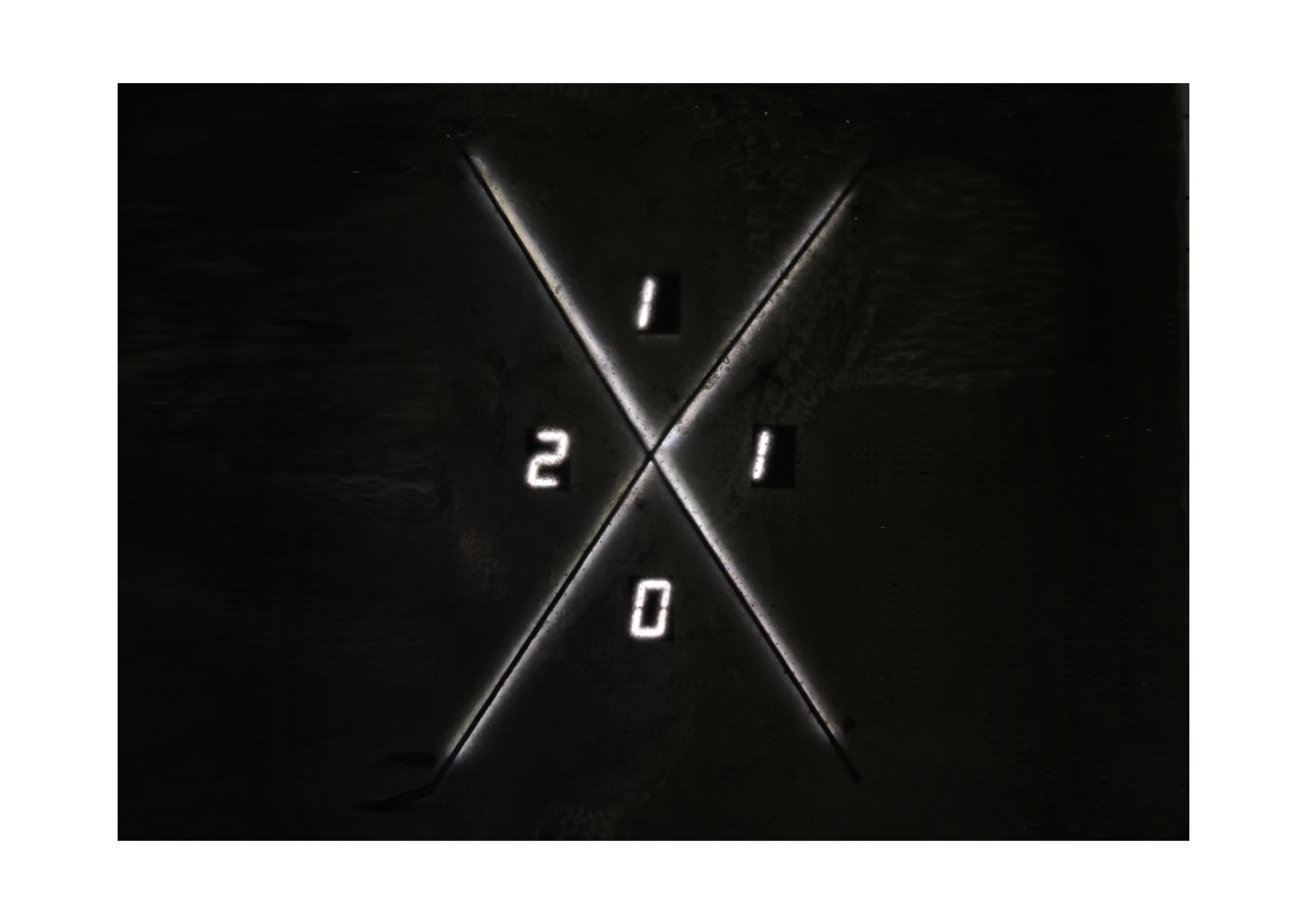the exploration of the lost and unknown ground – the recording of the soil
(2021) floor panels resin, led, aluminium frame (72 x 97 x 5 cm) decaying markings – concrete (each ap. 23 x 23 x 12 cm),
geo coordinates 51.326945-12.325262, 51.326949-12.325331
Sound
Die Tonaufnahme eines 12 Sekunden langen Erdbebens auf die 100-fache Länge gedehnt. Ein Metapher der aufgrund der Langsamkeit des Vorganges meist nicht erkennbaren Veränderung.
The sound recording of a 12-second earthquake stretched to 100 times its length. A metaphor of the change that is usually not recognisable due to the slowness of the process.
Über das Erkennen – Untersuchen, Markieren, Ablösen, Analysieren, Fühlen, Formen und Verändern.
(english text below)
aus einer Enzyklopädie: (Der) Boden ist die äusserste Schicht der Erdkruste, die durch Lebewesen geprägt wird. Im Boden findet ein reger Austausch von Stoffen und Energie zwischen Luft, Wasser und Gestein statt.
Das Ausgangsmaterial der Böden ist Gestein, das durch Erosion und Verwitterung langsam gelockert und in seine mineralischen Bestandteile zerlegt wird. Erste Pflanzen können sich ansiedeln und die in den Mineralien enthaltenen Nährstoffe nutzen. Diese Pflanzen wiederum sind die Basis für die Bildung von Humus.
Der Boden ist jedoch auch Verbundenheit mit dem spezifischen Ort und bei detaillierter Kenntnis zugleich mit dem Ganzen – ein Teil der Identität, der Erinnerung und der Veränderung.
Die bewusste Erkundung der umgebenden aber auch der fernen Struktur und Beschaffenheit führt auch zu differenzierter Wahrnehmung als vertraute Umgebungen.
markings Einteilungen eines Gebietes sind auf jeder Karte zu finden: die immer engmaschiger werdende Einteilung in Längen- und Breitengrade. Feiner noch die Markierungen auf Fotos, die mir zum ersten Mal in den Mondfotos der Nasa auffielen: kleine Ecken und Kreuze bestimmen Einzelflächen und lenken den Blick zu einer genaueren Betrachtung und Analyse.
Doch auch die Erkundung und Erforschung ist nur ein Zeitabschnitt in der fortlaufenden Entwicklung und Veränderung – so lösen sich selbst die angebrachten Markierungen und zerfallen.
detached soil I Die Herauslösung, das Sichern und Festhalten eines Zustandes zeigt unabhängig einer zunehmend ungenauer werdenden Erinnerung die immer und überall vor sich gehende Veränderung und Entwicklung. Die aus ihrem ursprünglichen Zusammenhang herausgelösten Teile werden hier jedoch auch zu sich unabhängig vom originalen Kontext verändernden Artefakten.
Die separierten Bodenplatten sind noch in Teilen mit Lichtkreuzen als verbliebene Spur des Zeitpunktes hinterleuchtet. Die Wahrnehmung mittels Vergleich der Zustände der stetigen Veränderung gleich welcher Beschaffenheit des ausgehenden Materials (und Wertes), dessen Zusammensetzung und (ursprünglichen) Ortes ermöglicht eine Verortung im Raum und der fortlaufenden Zeit und somit auch ein Bewusstsein über die Auswirkungen des eigenen Handelns.
the change (2021/22) – light trails
floor grid resin, rubber mat, led (64 x 84 x 3cm) groundprint concrete, led (97 x 72 x 3cm), geo coordinates 51.326945-12.325262
Die beginnende Veränderung/Zersetzung des Bodens hinterlässt Spuren. Die Fehlstellen mit Licht nachgezeichnet, finden sich an anderem Ort als Staubfragmente wieder und verweisen auf Herkunft und ursprüngliche Gestalt.
detached soil II
(2021/22) floor panels resin, led, steel reinforcements (72 x 97 x ap. 43 cm)
floor rolls resin (97 x d= 19-28 cm)
markings aluminium, resin, recycled glass, led (each 23 x 23 x 12 cm + 12 x 12 x 6 cm)
andrews-cross aluminium, resin, recycled glass, led (98 x 243 x 5 cm)
About recognition – examining, marking, detaching, analysing, feeling, forming and changing
from an encyclopaedia: (The) soil is the outermost layer of the earth’s crust, which is formed by living organisms. In the soil, a lively exchange of substances and energy takes place between air, water and rock.
The basic material of soils is rock, which is slowly loosened by erosion and weathering and broken down into its mineral components. The first plants can settle and use the nutrients contained in the minerals. These plants in turn are the basis for the formation of humus.
However, the soil is also connected to the specific place and, with detailed knowledge, at the same time to the whole – a part of identity, memory and change.
The conscious exploration of the surrounding but also the distant structure and texture also leads to differentiated perception as familiar environments.
markings dividing a territory can be found on every map: the increasingly close-meshed division into longitude and latitude. Even finer are the markings on photographs, which I first noticed in Nasa’s lunar photos: small corners and crosses define individual areas and direct the eye to a closer look and analysis.
But even exploration and research is only a period of time in the ongoing development and change – so even the attached markings detach and disintegrate.
detached soil I the detachment, the securing and holding of a state shows, independently of an increasingly imprecise memory, the change and development that is always and everywhere going on. Here, however, the parts detached from their original context also become artefacts that change independently of the original context.
The separated floor panels are still backlit in parts with light crosses as a remaining trace of the time. Perception through comparison of the states of constant change, regardless of the nature of the outgoing material (and value), its composition and (original) location, enables a localisation in space and continuous time and thus also an awareness of the effects of one’s own actions.
light trails the incipient change/decomposition of the soil leaves traces. The missing parts, traced with light, are found in other places as dust fragments and refer to their origin and original shape.



